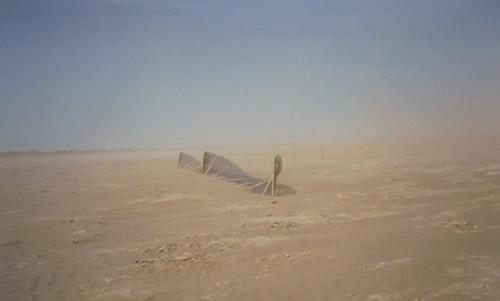In this episode of GeoTalk, we check in with Tom Williams, a 40-year veteran of disturbed land reclamation work, much of which has been in connection with mining.
Mining activities are integral to the success of an enormous number of industries, and many of them are inextricably part of our lives. Communications. Construction. Healthcare. Energy. Transportation. Essentially, everything built in modern life is connected to mining at some level. Mines, however, are being constructed on an ever bigger scale. As Williams notes, strong design, monitoring, and rehabilitation programs are needed. Also, he reminds us that in reclamation we need to guard against impatience and assumptions about how soils will respond.
Williams is the VP – Environmental Affairs for Fiore Gold US Inc. He’s also one of the featured speakers at the International Erosion Control Association 2018 Conference and Exhibition.
IECA 2018 will be held February 11 – 14 in Long Beach, California.
Other recent GeoTalk episodes:
- The Rise of ClosureTurf® in Final Cover Systems
- The Coming Wave of Biogeotechnical Engineering
- The Push towards Reinvention in Geomembranes
- Enhanced Wicking Geotextile Emerges from an Engineering Challenge
Subscribe on iTunes and in the Google Play store.
DISTURBED LAND RECLAMATION
“A lot of my projects have involved developing a soil from nothing,” Williams says. “From pure sand. Sterile material. Even hazardous material.”

The time required to reclaim disturbed land can vary greatly. Understanding that true, self-sustaining soils require time is one of the hardest messages to convey to clients and communities.
Some of the tools he uses include:
- Soil analyses, Geochemistry, Particle size analysis
- Soil correction techniques
- Geomorphic topographical design
- Biological and/or natural channel armoring
- All the basic revegetation techniques
- All the basic erosion control techniques and materials (e.g., turf reinforcement mats, RECPs)
- Climate prediction modeling
He doesn’t see the challenges on mine sites today being all that different from 20 or 30 years ago, but the scale of projects has grown and expectations in the reclamation activities have gone from “Hey, nobody’s done this before, so give it your best shot” to “that’s old hat now.” It has altered what the client expects or assumes about this work.
The challenges in general remain the same, though: how to stabilize large areas of disturbed land where there may not be ‘topsoil’ to put back; how to establish land forms that can be stabilized with the materials at hand; how to stabilize channels at the lowest cost; how best to protect the initial seeding from erosion until the vegetation reaches a point where it can hold the soil; etc.

Patience and careful monitoring of soil and vegetation health, though, pays off.
What is the biggest challenge to achieving success in disturbed land reclamation?
“I think by far it’s understanding the period of time that’s necessary to stabilize the soil until it achieves a self-sustaining level of establishment,” Williams says. “If you know this, you can minimize the level of protection you must design into the project. Predicting this is largely an inexact science.… Since periods of drought or excessive precipitation drastically affect it, the changing climate we are experiencing now adds to the difficulty.”
Cost-benefit analyses, he says, help elucidate how important proper planning and patience is to successful disturbed land reclamation schemes.
For more information on Fiore’s work, visit www.fioregold.com. To hear Tom Williams share 40 years of disturbed land reclamation experience as well as learn about related topics in mining, erosion and sediment control, and affiliated sectors, visit www.IECA.org. Click through to the events section for the latest on IECA’s annual conference and check out the full technical program.












